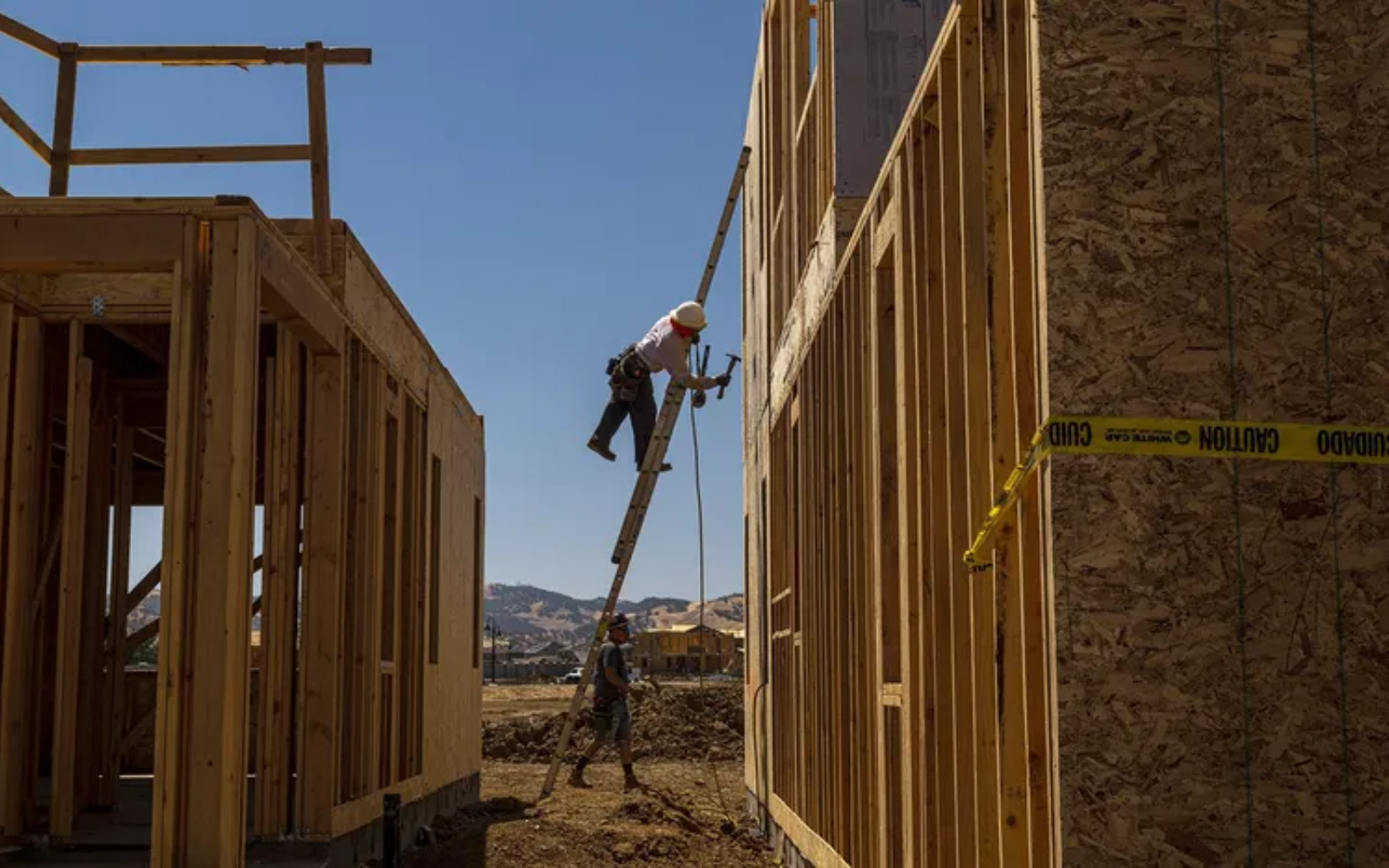From our friends at the KCM blog
There’s no denying the last couple of years have been tough for anyone trying to buy a home because there haven’t been enough houses to go around. But things are starting to look up.
There are more homes up for grabs this year. The graph below uses the latest data from Realtor.com to show in April 2024 there were more homes for sale than there were over the last few years (2021-2023):
As Realtor.com explains:
“There were 30.4% more homes actively for sale on a typical day in April compared with the same time in 2023, marking the sixth consecutive month of annual inventory growth.”
But does this growing inventory make house hunting...
Read More
By Jamie Wiebe | REALTOR.COM
Homes aren’t impulse purchases. It takes time to sift through listings and make your way from one home showing to the next; then, of course, there are those agonizing hours you wait to find out if your offer on a house was accepted, whether you can secure financing, and any number of other holdups.
Just so you’re prepared to play the waiting game, here are the steps to buy a house and how long they typically take, so you aren’t sitting there holding your breath and wondering if something’s up.
How long does it take to find a real estate agent?
Answer: A couple of days to a few weeks
Your real estate agent should be...
Read More
FROM OUR FRIENDS IN THE KCM BLOG
If you’re a member of a younger generation, like Gen Z, you may be asking the question: will I ever be able to buy a home? And chances are, you’re worried that’s not going to be in the cards with inflation, rising home prices, mortgage rates, and more seemingly stacked against you.
While there’s no arguing this housing market is challenging for first-time homebuyers, it is still achievable, especially if you have professionals on your side.
Here are some helpful tips you may get from a pro.
1. Explore Your Options for a Down Payment
If a down payment is your #1 hurdle, you may have options to give your savings...
Read More
By Margaret Heidenry | realtor.com
The housing market has been stagnant for several years now, with high home prices and unpredictable mortgage rates sidelining buyers and sellers alike.
But some U.S. metros seem to be defying the real estate market malaise. In these places, not only are homes selling at a quicker pace than the rest of the country, but prices are up as well.
Indeed, in its latest data analysis, which ranks the nation’s 20 hottest markets, Realtor.com® found that home prices are flat everywhere, seeing only a 2% rise in March—except for the hottest markets, which rose by 5.3% annually.
“Prices increased slightly nationwide in March, but the month’s hottest markets saw more substantial price...
Read More
From our Friends in the KCM Blog
Ever thought about living in the same house with your grandparents, parents, or other loved ones? You’re not alone. A lot of people are choosing to buy multi-generational homes where everyone can live together. Let’s check out why they think it’s a good idea to see if it might be a good fit for you, too.
Why People Are Choosing Multi-Generational Living
According to the National Association of Realtors (NAR), here are just a few key reasons buyers opted for multi-generational homes over the past year (see graph below):
Two of the top reasons had to do with aging parents. 27% of buyers chose multi-generational homes so they could take...
Read More
From our friends at the KCM blog
Over the past year or so, a lot of people have been talking about how tough it is to buy a home. And while there’s no arguing affordability is still tight, there are signs it’s starting to get a bit better and may improve even more throughout the year. Elijah de la Campa, Senior Economist at Redfin, says:
“We’re slowly climbing our way out of an affordability hole, but we have a long way to go. Rates have come down from their peak and are expected to fall again by the end of the year, which should make homebuying a little more affordable and incentivize buyers...
Read More
By Kristine Gill | Better Homes & Gardens
Learn more about common contingencies in real estate and how they can affect the buying processes.
Buying and selling a home often requires a dictionary as you navigate a new litany of terms, each describing a crucial step in the process. In real estate, a contingent offer has a meaning all its own—one that can make or break a deal.
“It is a common misconception that once you are under contract, you are going to close with that buyer and seller—no matter what,” says Abbey Wostal, a broker and owner at Better Homes and Gardens Real Estate Wostal Realty. “This is absolutely false if there...
Read More
From our friends in KCM
Before making the decision to buy a home, it’s important to plan for all the costs you’ll be responsible for. While you’re busy saving for the down payment, don’t forget you’ll want to prep for closing costs too.
Here’s some helpful information on what those costs are and how much you should budget for them.
What Are Closing Costs?
A recent article from Bankrate explains:
“Closing costs are the fees and expenses you must pay before becoming the legal owner of a house, condo or townhome . . . Closing costs vary depending on the purchase price of the home and how it’s being financed . . .”
Simply put, your closing costs are...
Read More
From our friends in KCM
If you’re planning to move soon, you might be wondering if there’ll be more homes to choose from, where prices and mortgage rates are headed, and how to navigate today’s market. If so, here’s what the professionals are saying about what’s in store for this season.
Odeta Kushi, Deputy Chief Economist, First American:
“. . . it seems our general expectation for the spring is that we will see a pickup in inventory. In fact, that already seems to be happening. But it won’t necessarily be enough to satiate demand.”
Lisa Sturtevant, Chief Economist, Bright MLS:
“There is still strong demand, as the large millennial population remains in the prime first-time homebuying range.”
Danielle Hale, Chief...
Read More
By Greg Robb | Realtor.com
The numbers: Construction of new U.S. homes rebounded 10.7% in February to an annual pace of 1.52 million units, the Commerce Department said Tuesday. That is the biggest gain in nine months. Despite the increase, starts are still below December’s level.
Economists on Wall Street were expecting a 7.4% rise in housing starts in February to 1.43 million. All numbers are seasonally adjusted.
The number of housing starts in January was revised slightly higher, to a drop of 12.3% to 1.37 million, from an initial reading of a 14.8% drop to 1.33 million. It is still the biggest drop since May 2022.
Building permits, a sign of future construction, rose...
Read More












